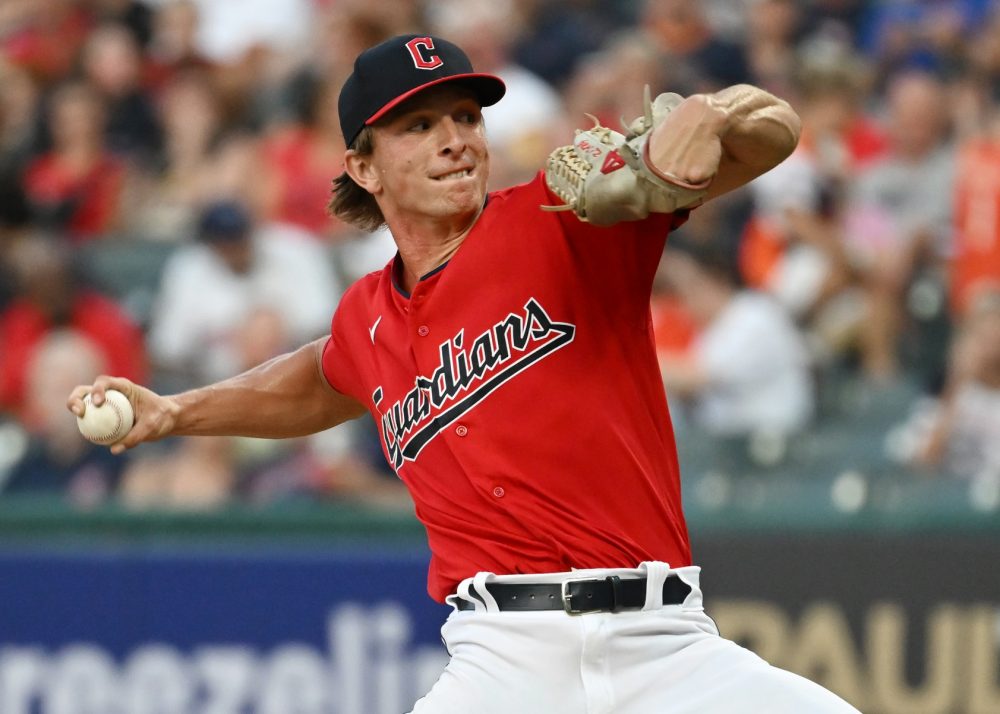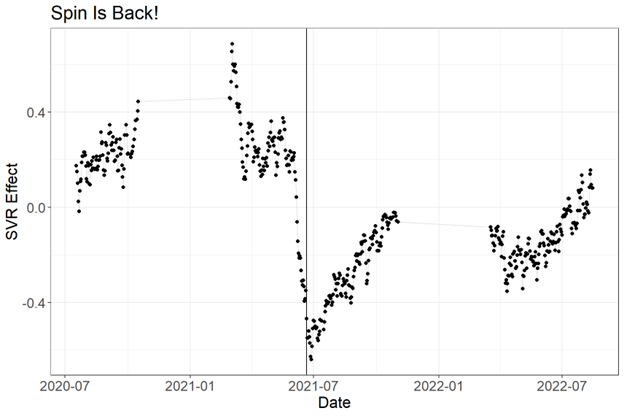
One of last season’s biggest storylines was the sudden realization that pitchers had been applying sticky substances to their hands in an effort to enhance their spin rates and pitch effectiveness. In and of itself, the fact that pitchers were cheating was hardly a surprise–there’s a long and dishonorable history of nefarious behavior by pitchers to scuff, lubricate, or otherwise change the surface of the ball to gain an advantage. What was surprising was how widespread the cheating was and how effective.
So MLB took action. In a rules crackdown announced midway through the 2021 season, the league decided to stop looking the other way and actively penalize pitchers for applying Spider Tack and related substances to the ball. The effect was massive: within a month or so, spin rates nosedived so abruptly that no one could deny with a straight face the frequency or efficacy of these substances or their widespread use.
For a while, it looked like MLB would be entering a different era, one with a lot less spin and consequently much more hittable pitches. But, even over the course of the second half of the 2021 season, spin rate began to tick up again in a curious, eyebrow-raising manner. And that trend has only accelerated this year, culminating in a spin-to-velocity ratio (SVR) that’s closing in on the incredible heights that were reached last season pre-crackdown.
Before jumping into the statistics, let’s briefly review what spin rate is and why it’s important. The faster the ball spins as it travels from pitcher to home plate, the more it moves, thanks largely to the Magnus effect. A pitcher that augments his four-seamer with Spider Tack or whatever other adhesive formula can gain perhaps a half inch or more of rise on his fastball, more than enough to significantly improve that pitch’s performance in terms of strikeouts and weak contact.
Spin scales with velocity, meaning that the harder a pitcher throws, the more rotations per minute they’ll get. To adjust out this effect, I’m using the spin-to-velocity ratio, or SVR for short. SVR also varies with lots of other factors, such as the temperature, park effects, and the individual pitcher, so I need to subtract out all of these other effects before honing in on the true change in SVR over time.
Once done, however, the trend is striking.

SVR has been on a wild ride over the last few seasons, spiking in 2021 before a precipitous and massive decline around June last year. Players adjusted before the crackdown was actually implemented, meaning spin started to fall in advance of MLB’s new rules. But then it came back up and as the playoffs began, pitchers had already recovered much of the spin they lost when MLB decided to take the issues seriously for the first time.
This year has seen an unbroken upward slope, culminating in an average SVR effect in recent dates not entirely dissimilar from what it was pre-crackdown. It’s also close to the highest SVR in the Statcast era, highlighting a potent weapon modern pitchers have in suppressing offense.
The actual effect on offense is hard to isolate given MLB’s continuing shenanigans with the baseball, newly-installed humidors, and regular variation over the course of a season in offense due to weather and temperature. However, strikeout percentage (K%) typically drops over the course of a year, thanks in part to warmer weather that favors offense. Taking 2019 as a typical year, K% fell by 1.1 percentage points from March/April to August. This year, it’s down only 0.7 percentage points. Because of all of the other factors impacting offense at the same time, it’s hazardous to make too much of this, and other statistics besides strikeout rate are even more tenuously connected to pitch movement.
As usual, it’s impossible to know for sure why spin rate is rising, but there was an obvious culprit last year. It would be naive to believe that the crackdown on sticky substance usage at the same time as the massive drop in spin was a coincidence. And it’s naive to believe that pitchers wouldn’t try to recover some of that lost spin by working around the rules this year, stricter though they may be.
Unsurprisingly, the same pitchers who lost rotations last year are miraculously getting them back this year, adding more evidence to the idea that they have found new ways to apply substances. Gerrit Cole is a famous example of a Spider Tack user, given his blatantly obvious, wandering non-denial when asked. Cole was among those whose SVR faltered most in June and July 2021, but it has risen this season, albeit not quite to his previous heights.
MLB decided that umpires would inspect pitchers’ hands to discourage them from applying doses of spin-enhancing substances to the ball this season. But there are myriad ways around those inspections. A little bit of Spider Tack or a related goop goes a long way and considering how many people touch the ball on its way to the pitcher, and how many places the pitcher has available to store a bit of chemical on their person, there may be no ironclad way to prevent hurlers from augmenting their performance.
But if MLB doesn’t enhance their inspections again, we know which way this story goes. As pitchers found ever-more effective chemicals to induce spin, their offerings improved and offense evaporated. They are once again testing the limits and if they find foolproof ways to deploy the same substances they once used, that knowledge will surely spread throughout the league and lead to a recurrence of the high-spin era we saw reach its peak in the first half of 2021.
Thank you for reading
This is a free article. If you enjoyed it, consider subscribing to Baseball Prospectus. Subscriptions support ongoing public baseball research and analysis in an increasingly proprietary environment.
Subscribe now